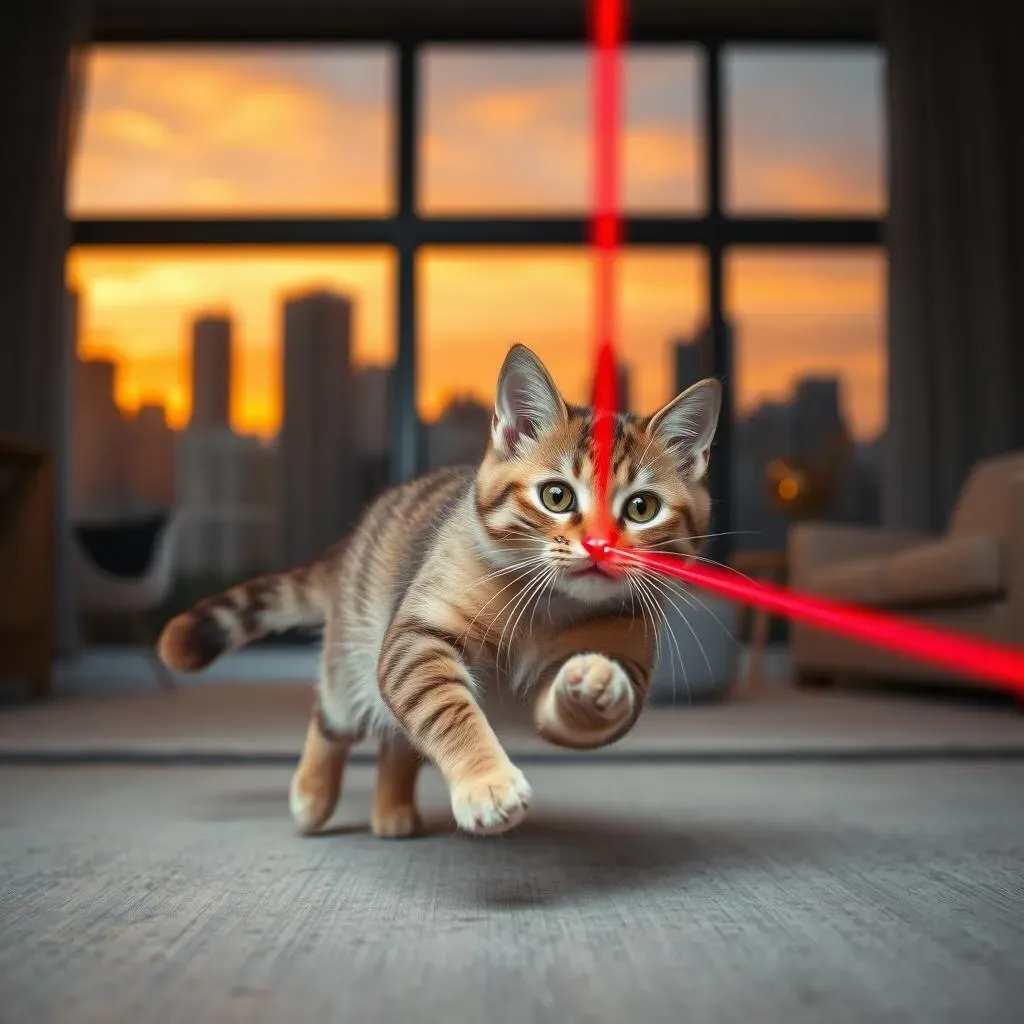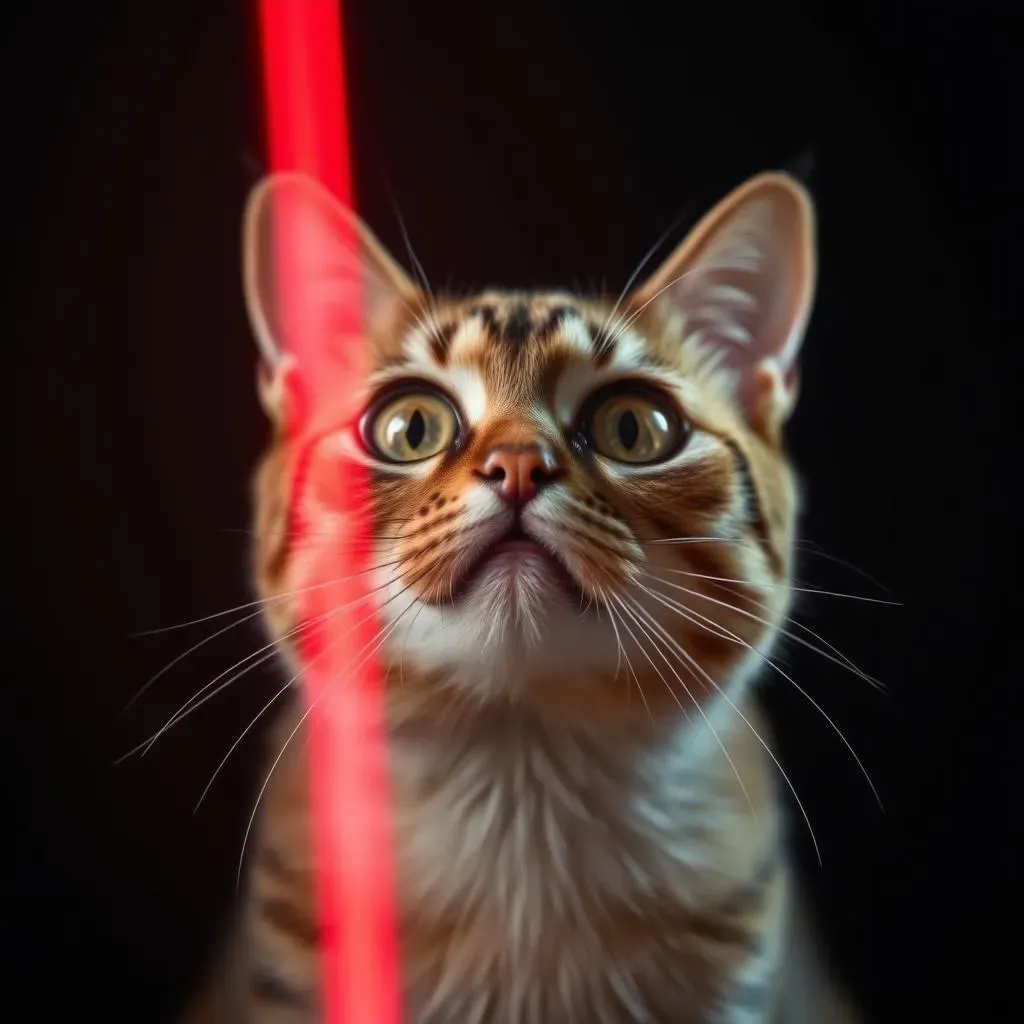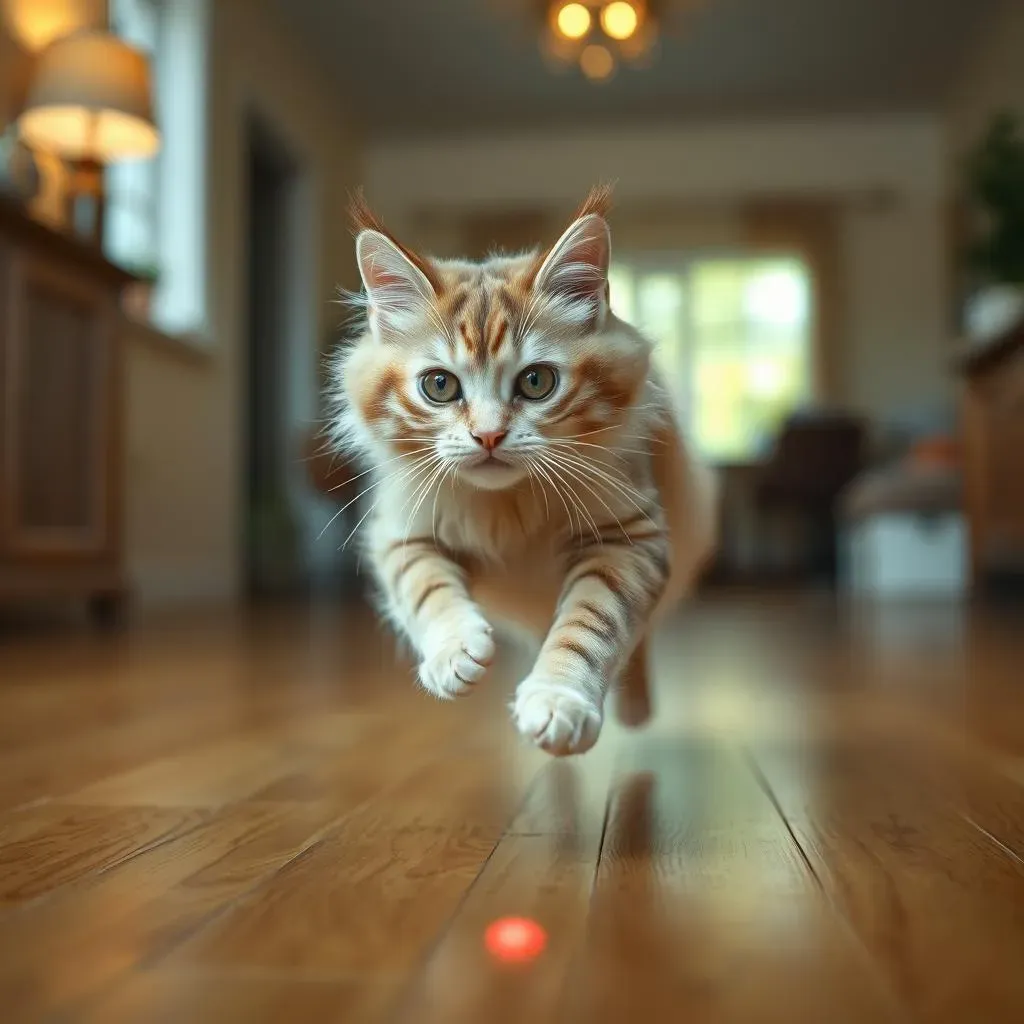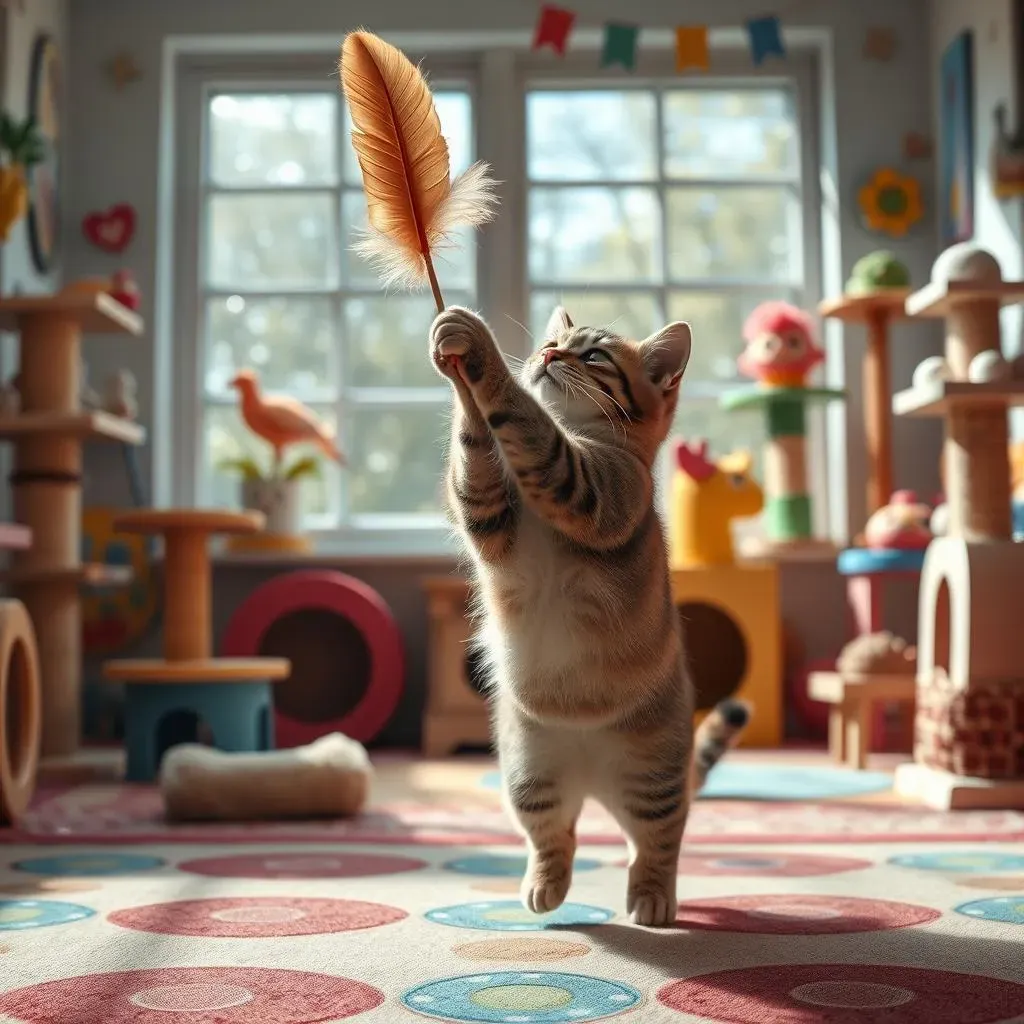Table of Contents
We all love watching our feline friends chase that elusive red dot. It's undeniably entertaining, but have you ever wondered: are cat laser toys harmful? This article explores the fascinating relationship between cats and laser pointers, examining both the undeniable appeal and the potential downsides. We'll uncover why cats are so captivated by these seemingly simple toys, delving into their natural hunting instincts. Then, we'll address the crucial question: Are cat laser toys harmful? We'll discuss potential risks, like eye damage and frustration from never "catching" the prey. But don't worry, this isn't just a doom and gloom report! We'll also provide practical, actionable advice on how to play safely with your cat using laser toys, including tips to mitigate potential harm. Finally, we'll explore fun and engaging alternatives to laser pointers, ensuring your kitty remains happy, healthy, and stimulated. So, let's dive in and discover the truth about whether cat laser toys harmful, and how to keep your furry friend safe and entertained.
The Allure of the Chase: Why Cats Love Cat Laser Toys

The Allure of the Chase: Why Cats Love Cat Laser Toys
Instinctual Hunting Behavior
Cats are natural-born hunters. Their ancestors spent millennia stalking, chasing, and pouncing on prey. This ingrained hunting instinct is deeply rooted in their DNA, and it's a powerful motivator. A laser pointer mimics the movement of small prey animals, triggering a primal response in your cat. The erratic, unpredictable movements of the red dot perfectly tap into this ancient hunting drive, making it an incredibly engaging toy.
Think about it: the way the laser dot darts and zigzags across the floor is exactly how a mouse or a bird might move. This activates their predatory instincts, releasing endorphins and creating a sense of satisfaction, even if they never actually "catch" their prey. This is why cats can spend hours chasing a laser, completely engrossed in the game. It’s not just play; it's fulfilling a deep-seated biological need.
Hunting Stage | Laser Pointer Equivalent |
|---|---|
Stalking | Slow, deliberate movements of the laser dot |
Chasing | Rapid, erratic movements of the laser dot |
Pouncing | Sudden stop of the laser dot (followed by a reward!) |
The Psychology of the Uncatchable Prey
The fact that the laser dot is always just out of reach adds another layer of intrigue. This constant chase, without the satisfaction of a successful hunt, can be incredibly stimulating for a cat's mind. It keeps them engaged, mentally alert, and physically active, preventing boredom and encouraging healthy exercise. The never-ending chase is a form of mental enrichment, a puzzle they're constantly trying to solve.
However, this is also where the potential for problems lies. The constant frustration of never catching the "prey" can lead to stress and even behavioral issues in some cats. It's crucial to balance the mental stimulation with a successful conclusion to the game, giving your cat a sense of accomplishment and preventing the build-up of negative feelings. We'll explore how to do this safely and effectively in the next section.
- Always end the laser game by letting your cat "catch" the dot on a toy or treat.
- Keep play sessions short and sweet, avoiding overstimulation.
- Offer a variety of toys to keep your cat mentally and physically stimulated.
The Potential Dangers: Can Cat Laser Toys Harm Your Cat?

The Potential Dangers: Can Cat Laser Toys Harm Your Cat?
Eye Damage
While the lasers in most cat toys are low-powered and generally considered safe, shining a laser directly into your cat's eyes is a big no-no. Even low-powered lasers can cause damage to the retina, potentially leading to vision problems or even blindness. Cats' eyes are particularly sensitive, and the intense, focused beam of a laser can be harmful. Think of it like looking directly at the sun – it's not a good idea for humans, and it's even riskier for our feline friends.
Always keep the laser beam away from your cat's eyes. If you accidentally shine it in their direction, stop immediately and give them a break from the game. It's better to err on the side of caution. Remember, their eyesight is precious, and protecting it is our responsibility as pet owners. A little bit of awareness goes a long way in preventing potential eye injuries.
Potential Eye Problems | Symptoms |
|---|---|
Retinal damage | Squinting, excessive tearing, avoiding light |
Blindness | Inability to navigate, bumping into objects |
Frustration and Behavioral Issues
The never-ending chase inherent in laser pointer play can be frustrating for cats. The inability to ever "catch" their prey can lead to increased stress, anxiety, and even aggression in some cats. Imagine being endlessly chased by a delicious treat that you can never quite catch! This constant, unfulfilled desire can lead to behavioral issues like excessive meowing, destructive scratching, or even biting.
This is why it's so crucial to end each play session with a "catch." Direct the laser beam onto a physical toy, like a feather wand or a toy mouse, allowing your cat to "capture" their prey. This provides the satisfaction of a successful hunt, alleviating frustration and preventing the development of negative behaviors. It's a simple change that can make a huge difference in your cat's well-being.
- Provide alternative toys that allow for successful hunting experiences.
- Keep laser sessions short and always end with a "catch".
- Monitor your cat's behavior for signs of stress or frustration.
Safe Laser Play: Tips and Tricks for Responsible Use of Cat Laser Toys

Safe Laser Play: Tips and Tricks for Responsible Use of Cat Laser Toys
Keeping Your Cat's Eyes Safe
The most important rule is to never point the laser directly at your cat's eyes. Even a low-powered laser can cause damage to their sensitive retinas. Always keep the beam moving, and avoid aiming it near their face. Think of it like this: you wouldn't shine a flashlight directly into someone's eyes, right? The same principle applies to your cat. Their eyes are precious, and we need to protect them.
Consider the environment too. Avoid playing laser games near reflective surfaces like mirrors or windows. The reflected light can be just as dangerous as the direct beam. Keep play sessions in a well-lit room, allowing your cat's pupils to remain smaller and less sensitive to the laser light. A little bit of precaution can go a long way in preventing eye injuries.
Safe Laser Play Practices | Unsafe Laser Play Practices |
|---|---|
Keep the beam moving constantly | Pointing the laser directly at the eyes |
Avoid reflective surfaces | Playing in dark rooms |
Use a low-powered laser | Using a high-powered laser |
Ending the Game on a Positive Note
The key to safe and enjoyable laser play is to always end the game on a positive note. Never leave your cat frustrated and chasing an unattainable target. Instead, direct the laser beam onto a physical toy or treat, allowing your cat to "catch" their prey. This provides the satisfaction of a successful hunt, preventing the build-up of frustration and stress.
Imagine the relief your cat will feel after successfully "catching" the laser dot! It’s like finally reaching the end of a long, exciting chase. This positive reinforcement helps associate the laser pointer with a rewarding experience, making it a more enjoyable and less stressful activity. It’s all about creating a positive association and avoiding the frustration of an unsatisfying end.
- Always end the game by directing the laser onto a toy your cat can interact with.
- Consider using a toy that makes a sound or has a texture your cat enjoys.
- Reward your cat with treats or praise after they "catch" the dot.
Timing and Variety are Key
Don't overdo it! Keep laser play sessions short and sweet, typically no more than 5-10 minutes at a time. Overstimulation can lead to stress and exhaustion. Think of it like a high-intensity workout; you wouldn't run a marathon every day. Your cat needs breaks and a variety of activities to stay happy and healthy.
Remember, laser pointers are just one piece of the puzzle. Offer your cat a range of toys, including interactive toys, puzzle feeders, and scratching posts. A diverse play environment helps prevent boredom and keeps your cat mentally and physically stimulated. Variety is the spice of life, even for cats! It keeps them engaged and prevents them from becoming overly reliant on any single toy.
Alternatives to Laser Toys: Keeping Your Cat Entertained and Engaged

Alternatives to Laser Toys: Keeping Your Cat Entertained and Engaged
Exploring Engaging Alternatives
So, you're ready to ditch the laser pointer, but you want to keep your cat entertained. That's fantastic! The good news is, there's a whole world of engaging alternatives out there. Think beyond the red dot; there are tons of toys and activities that tap into your cat's natural instincts while avoiding the potential pitfalls of laser pointers. We're talking about toys that provide that satisfying "catch," offering a sense of accomplishment and preventing frustration.
Consider interactive toys like feather wands, toy mice, or even simple balls of string. These toys allow your cat to actively participate in the hunt, providing both physical and mental stimulation. You can even incorporate puzzle feeders into their playtime, challenging them to work for their treats. This encourages problem-solving skills and provides a satisfying reward system.
- Interactive Wand Toys: Mimic the movement of prey, engaging your cat's hunting instincts.
- Puzzle Feeders: Challenge your cat mentally and provide a rewarding food experience.
- Crinkle Balls: Provide auditory and tactile stimulation, encouraging play.
- Catnip Toys: Tap into your cat's natural love for catnip for a fun and relaxing experience.
Enrichment Activities Beyond Toys
Beyond toys, there are many other ways to keep your cat entertained. Creating a stimulating environment is essential for a happy cat. This can include climbing structures, window perches, or even simply rotating their toys regularly to prevent boredom. Remember, cats are curious creatures, and providing a stimulating environment is vital for their mental and physical well-being. Think of it as creating a cat-sized adventure playground in your home!
Consider adding vertical space to your cat's environment. Cats love to climb and survey their territory from high vantage points. Cat trees, shelves, or even strategically placed boxes can provide this essential vertical space, allowing your cat to explore and play in new and exciting ways. Providing a stimulating environment is just as important as providing engaging toys.
Enrichment Activity | Benefits |
|---|---|
Climbing structures | Physical exercise, mental stimulation, stress relief |
Window perches | Opportunities for bird watching and environmental exploration |
Rotating toys | Maintains interest and prevents boredom |